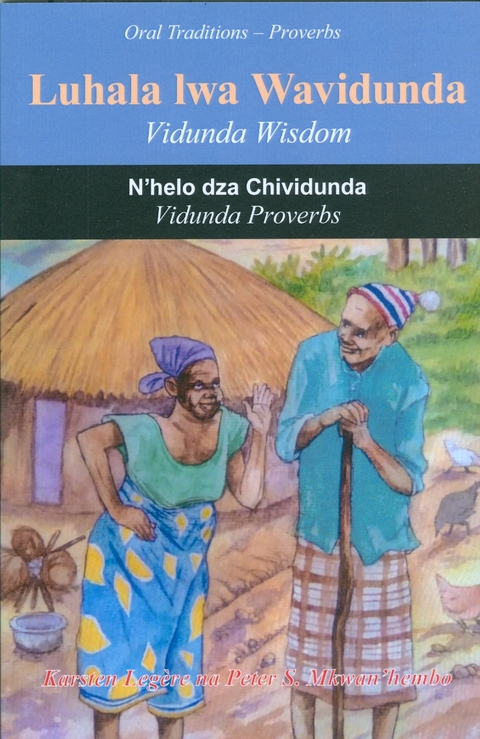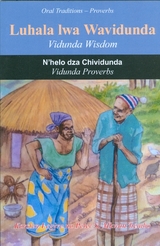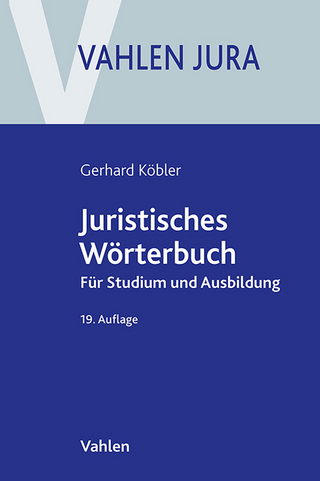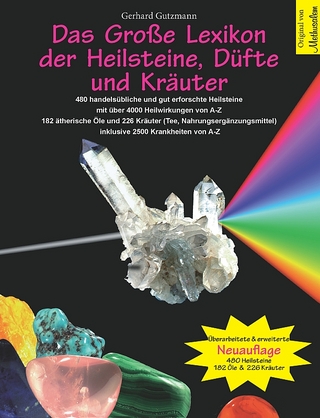Vidunda Proverbs. Methali za Kividunda – N’helo dza Chividunda
With an introduction by Karsten Legère, a preface by Shani Omari Mchepange and drawings by Juma Mgenda
Seiten
- Titel leider nicht mehr lieferbar
- Artikel merken
Seit einigen Jahren war die Dokumentation der tansanischen Vidunda-Sprache Gegenstand des gemeinsamen Forschungsprojektes der beiden Herausgeber – bis 2010 im Rahmen des bilateralen Kooperationsprojekts „Languages of Tanzania“ zwischen der Universität Göteborg / Schweden und der Universität Dar es Salaam (UDSM) / Tansania, finanziert durch die Institution SIDA Swedish International Development Cooperation Agency.
Laut Guthrie (gemäß seiner Klassifikation Bantu-Zone G.38) wird das Vidunda von etwa 12.000 Menschen in der Morogoro-Region, dem Kilosa-Gebiet (südlich von Mikumi) und insbesondere den Dörfern Vidunda, Udunghu und Chon’hwe gesprochen. Zusätzlich gibt es weitere Sprechergruppen in benachbarten Orten, die aber nicht erfasst wurden, da in diesen Gebieten Swahili als Kommunikationssprache dominiert.
Das Buch beinhaltet Vidunda-Sprichwörter im Originaltext sowie ihre Swahili-Äquivalente oder Übersetzungen. Der Vidunda-Swahili-Abschnitt findet sich auf den Seiten 1–36 (257 Einträge) und die Swahili-Vidunda-Version auf den Seiten 37–74 (250 Einträge). Im Vorwort diskutiert Dr. Mchepange vom Institut für Swahili (der UDSM) die Rolle des Sprichwortes in traditionellen ländlichen Lebensweise, in diesem Fall anhand der Vidunda-Gemeinschaft. Sie beginnt mit verschiedenen Themen, die in den Sprichwörtern vorkommen, und macht auf die Parallelen zwischen der Vidunda- und der Swahili-Version aufmerksam.
Es lohnt sich, die Entwicklung und Erweiterung des Sprichwort-Inventars im Vidunda anhand der offensichtlichen Entlehnungen vom Swahili in das Vidunda untersuchen. Angesichts der Dominanz des Swahili als interethnisches Kommunikationsmedium in Ostafrika ist es in diesem Zusammenhang nicht möglich, aus historischer Sicht genauere Informationen zu geben.
Verschiedene tansanische Experten waren an der Vorbereitung und der Vollendung der vorliegenden Veröffentlichung beteiligt, zum Beispiel Mohamed Mwinyi (früheres Mitglied der BAKITA Baraza la Kiswahili la Taifa) und Rahma Mudhar (UDSM), die beide den Swahili-Teil mitgestaltet haben. Zudem hat die begnadete Zeichnerin Juma Mgenda erneut authentische Illustrationen geschaffen, ähnlich denen der früheren Vidunda-Oratur-Bücher als auch den Sammelbänden mit Volkserzählungen zum Ng’hwele und Kamba. Im Laufe der Bearbeitung und Vollendung des Sprichwort-Manuskripts gab es eine intensive Zusammenarbeit zwischen der UDSM und dem Swahili-Institut.
***
For several years, the documentation of the Tanzanian Vidunda language has been the subject of joint research by the two editors – until 2010 within the framework of the bilateral cooperation project “Languages of Tanzania” between the Gothenburg University / Sweden and the University of Dar es Salaam (UDSM) / Tanzania, funded by the institution SIDA Swedish International Development Cooperation Agency.
Since then, contacts with regard to the Vidunda community and language have been more sporadic concentrating mainly on the publication of the extensive collection of Vidunda orature material, which includes i.a. folk stories, historical accounts, songs, or proverbs, as presented in this publication. The Vidunda language (according to Guthrie: Bantu Zone G.38, Chividunda is the autonym) is spoken by about 12,000 people in the Morogoro region, Kilosa district (south of Mikumi), especially in the villages of Vidunda, Udunghu and Chon’hwe. In addition, there is another group of Vidunda speakers in the neighbouring areas, which has not been numerically recorded, due to the dominance of Swahili as a means of communication.
It is interesting to note that the Tanzanian Minister of Information, Arts, Culture and Sport, Harrison Mwakyembe, in his 2020/21 budget speech in parliament recently focused i.a. on small Tanzanian languages. In this respect, dealing with the relatively small number of e.g. Vidunda, Zaramo, Segeju and Burunge language speakers, the Minister stated that it is high time now to seriously study the cultural heritage contained in the oral literature and traditions of languages other than Swahili.
Especially the four endangered languages quoted above and other small ones should be documented throughout the country. Against this background, the current publication with Vidunda proverbs is a valuable contribution to the language documentation in the sense of the Tanzanian cultural policy. So far, the editors have earlier published together two books with Vidunda folk stories and their Swahili translation (2006 and 2008). The present publication has again to do with the cultural heritage of the Vidunda community which is still alive at least inthe mentioned villages.
The book presents Vidunda proverbs and their Swahili equivalents or translation. The Vidunda-Swahili section is presented on pages 1–36 (257 entries) and the Swahili-Vidunda version with 250 entries on pages 37–74. In the foreword, Dr. Mchepange of the Institute for Swahili Studies of UDSM discusses the role of proverbs in traditional rural lifestyles, and here by means of the Vidunda community. She starts from a number of topics that are covered in the proverbs. At the same time, she draws attention to the parallels that exist between the Vidunda versus the Swahili version. As examples, Haraka, haraka haina baraka / Hima, hima yahela mboto (42), ‘More haste, less speed’, or ‘Who ever digs a pit for others, falls into it himself’ Mchimba kisima huingia mwenyewe / Mbawachisima kokwinjila yuye (113) can be cited here.
It is worth to take note of the development and expansion of the Vidunda proverb inventory by means of the obvious borrowings from Swahili into Vidunda. In view of the dominance of Swahilias a supra-ethnic medium of communication in East Africa, it is not possible in this context to give more precise information from a historical perspective. The resource persons who made this collection of proverbs available were excellent experts not only in the Vidunda language, but also in Swahili. However, they do not know when a Swahili proverb was borrowed by the Vidunda community. Nonetheless, the vitality of oral traditions and their adaptation to the present is evident in the complex composition of the proverbs in this collection.
Various Tanzanian experts were involved in the preparation and completion of this publication. In addition to the resource persons just referred to (their names are listed in the initial part of the book), other committed co-workers who have reviewed and revised this manuscript should be mentioned here. Thus, among them are Mohamed Mwinyi (ex-National Swahili Council) and Rahma Mudhar (UDSM), who have both upgraded the Swahili part. Further, as an experienced illustrator, Juma Mgenda has once again created authentic illustrations, similar in style to those in the earlier Vidunda orature books as well as in Ng’hwele and Kamba folk stories collections. There have also been various contacts with the UDSM Institute of Swahili Studies in the editing and completion of the proverb manuscript.
Laut Guthrie (gemäß seiner Klassifikation Bantu-Zone G.38) wird das Vidunda von etwa 12.000 Menschen in der Morogoro-Region, dem Kilosa-Gebiet (südlich von Mikumi) und insbesondere den Dörfern Vidunda, Udunghu und Chon’hwe gesprochen. Zusätzlich gibt es weitere Sprechergruppen in benachbarten Orten, die aber nicht erfasst wurden, da in diesen Gebieten Swahili als Kommunikationssprache dominiert.
Das Buch beinhaltet Vidunda-Sprichwörter im Originaltext sowie ihre Swahili-Äquivalente oder Übersetzungen. Der Vidunda-Swahili-Abschnitt findet sich auf den Seiten 1–36 (257 Einträge) und die Swahili-Vidunda-Version auf den Seiten 37–74 (250 Einträge). Im Vorwort diskutiert Dr. Mchepange vom Institut für Swahili (der UDSM) die Rolle des Sprichwortes in traditionellen ländlichen Lebensweise, in diesem Fall anhand der Vidunda-Gemeinschaft. Sie beginnt mit verschiedenen Themen, die in den Sprichwörtern vorkommen, und macht auf die Parallelen zwischen der Vidunda- und der Swahili-Version aufmerksam.
Es lohnt sich, die Entwicklung und Erweiterung des Sprichwort-Inventars im Vidunda anhand der offensichtlichen Entlehnungen vom Swahili in das Vidunda untersuchen. Angesichts der Dominanz des Swahili als interethnisches Kommunikationsmedium in Ostafrika ist es in diesem Zusammenhang nicht möglich, aus historischer Sicht genauere Informationen zu geben.
Verschiedene tansanische Experten waren an der Vorbereitung und der Vollendung der vorliegenden Veröffentlichung beteiligt, zum Beispiel Mohamed Mwinyi (früheres Mitglied der BAKITA Baraza la Kiswahili la Taifa) und Rahma Mudhar (UDSM), die beide den Swahili-Teil mitgestaltet haben. Zudem hat die begnadete Zeichnerin Juma Mgenda erneut authentische Illustrationen geschaffen, ähnlich denen der früheren Vidunda-Oratur-Bücher als auch den Sammelbänden mit Volkserzählungen zum Ng’hwele und Kamba. Im Laufe der Bearbeitung und Vollendung des Sprichwort-Manuskripts gab es eine intensive Zusammenarbeit zwischen der UDSM und dem Swahili-Institut.
***
For several years, the documentation of the Tanzanian Vidunda language has been the subject of joint research by the two editors – until 2010 within the framework of the bilateral cooperation project “Languages of Tanzania” between the Gothenburg University / Sweden and the University of Dar es Salaam (UDSM) / Tanzania, funded by the institution SIDA Swedish International Development Cooperation Agency.
Since then, contacts with regard to the Vidunda community and language have been more sporadic concentrating mainly on the publication of the extensive collection of Vidunda orature material, which includes i.a. folk stories, historical accounts, songs, or proverbs, as presented in this publication. The Vidunda language (according to Guthrie: Bantu Zone G.38, Chividunda is the autonym) is spoken by about 12,000 people in the Morogoro region, Kilosa district (south of Mikumi), especially in the villages of Vidunda, Udunghu and Chon’hwe. In addition, there is another group of Vidunda speakers in the neighbouring areas, which has not been numerically recorded, due to the dominance of Swahili as a means of communication.
It is interesting to note that the Tanzanian Minister of Information, Arts, Culture and Sport, Harrison Mwakyembe, in his 2020/21 budget speech in parliament recently focused i.a. on small Tanzanian languages. In this respect, dealing with the relatively small number of e.g. Vidunda, Zaramo, Segeju and Burunge language speakers, the Minister stated that it is high time now to seriously study the cultural heritage contained in the oral literature and traditions of languages other than Swahili.
Especially the four endangered languages quoted above and other small ones should be documented throughout the country. Against this background, the current publication with Vidunda proverbs is a valuable contribution to the language documentation in the sense of the Tanzanian cultural policy. So far, the editors have earlier published together two books with Vidunda folk stories and their Swahili translation (2006 and 2008). The present publication has again to do with the cultural heritage of the Vidunda community which is still alive at least inthe mentioned villages.
The book presents Vidunda proverbs and their Swahili equivalents or translation. The Vidunda-Swahili section is presented on pages 1–36 (257 entries) and the Swahili-Vidunda version with 250 entries on pages 37–74. In the foreword, Dr. Mchepange of the Institute for Swahili Studies of UDSM discusses the role of proverbs in traditional rural lifestyles, and here by means of the Vidunda community. She starts from a number of topics that are covered in the proverbs. At the same time, she draws attention to the parallels that exist between the Vidunda versus the Swahili version. As examples, Haraka, haraka haina baraka / Hima, hima yahela mboto (42), ‘More haste, less speed’, or ‘Who ever digs a pit for others, falls into it himself’ Mchimba kisima huingia mwenyewe / Mbawachisima kokwinjila yuye (113) can be cited here.
It is worth to take note of the development and expansion of the Vidunda proverb inventory by means of the obvious borrowings from Swahili into Vidunda. In view of the dominance of Swahilias a supra-ethnic medium of communication in East Africa, it is not possible in this context to give more precise information from a historical perspective. The resource persons who made this collection of proverbs available were excellent experts not only in the Vidunda language, but also in Swahili. However, they do not know when a Swahili proverb was borrowed by the Vidunda community. Nonetheless, the vitality of oral traditions and their adaptation to the present is evident in the complex composition of the proverbs in this collection.
Various Tanzanian experts were involved in the preparation and completion of this publication. In addition to the resource persons just referred to (their names are listed in the initial part of the book), other committed co-workers who have reviewed and revised this manuscript should be mentioned here. Thus, among them are Mohamed Mwinyi (ex-National Swahili Council) and Rahma Mudhar (UDSM), who have both upgraded the Swahili part. Further, as an experienced illustrator, Juma Mgenda has once again created authentic illustrations, similar in style to those in the earlier Vidunda orature books as well as in Ng’hwele and Kamba folk stories collections. There have also been various contacts with the UDSM Institute of Swahili Studies in the editing and completion of the proverb manuscript.
| Erscheinungsdatum | 23.03.2021 |
|---|---|
| Reihe/Serie | Wortkunst und Dokumentartexte in afrikanischen Sprachen ; 41 |
| Illustrationen | Juma Mgenda |
| Mitarbeit |
Herausgeber (Serie): Wilhelm J.G. Möhlig |
| Vorwort | Shani Omari Mchepange, Karsten Legère, Peter S. Mkwanhembo |
| Zusatzinfo | 83 Zeichnungen |
| Verlagsort | Köln |
| Sprache | englisch; Swahili |
| Maße | 145 x 220 mm |
| Gewicht | 160 g |
| Themenwelt | Schulbuch / Wörterbuch ► Lexikon / Chroniken |
| Geisteswissenschaften ► Sprach- / Literaturwissenschaft | |
| Schlagworte | Bedrohte Sprachen • endangered languages • Orale Literatur • Oraturforschung • Parömiologie • Sprichwörter • Suaheli • Tansania • Vidunda • Volksweisheit |
| ISBN-10 | 3-89645-741-1 / 3896457411 |
| ISBN-13 | 978-3-89645-741-7 / 9783896457417 |
| Zustand | Neuware |
| Haben Sie eine Frage zum Produkt? |
Mehr entdecken
aus dem Bereich
aus dem Bereich
Buch (2024)
Urban & Fischer in Elsevier (Verlag)
29,00 €
für Studium und Ausbildung
Buch | Softcover (2024)
Franz Vahlen (Verlag)
29,80 €
Buch | Softcover (2022)
Methusalem (Verlag)
19,95 €




